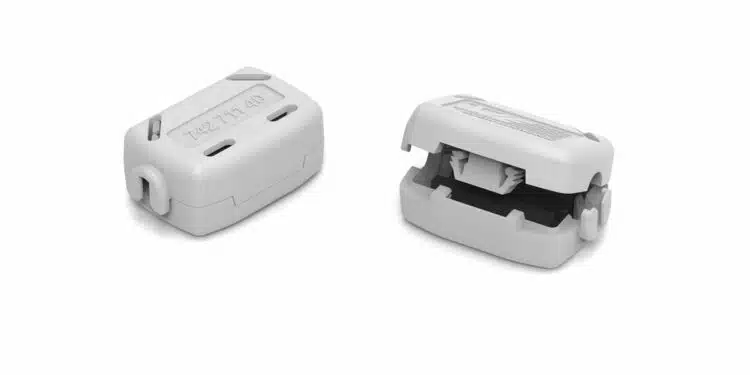Würth Elektronik expands its STAR-TEC and STAR-TEC LFS snap ferrite families, which are now also available for thin cables.
Snap ferrites, developed in-house with technology using keys for retroactive cable noise suppression, are among the products that have made Würth Elektronik so well-known.
The STAR‑TEC and STAR-TEC LFS product families have since grown: There is now a ferrite available for cable diameters of 2 to 3 mm that features all the proven practical benefits familiar from Würth Elektronik snap ferrites.
EMC protection is becoming increasingly important for applications using smaller cable diameters as compact packages are facing more sources of interference. This makes noise suppression increasingly challenging, prompting Würth Elektronik to expand the smallest packages of the STAR-TEC and STAR-TEC LFS families in its ferrite range.
The STAR-TEC snap ferrites are used for retroactive suppression of frequency-dependent and conducted interference on single conductors in the frequency range from 1 MHz to 1 GHz. The STAR-TEC LFS series of snap ferrites were specifically designed for low-frequency applications in the 300 kHz to 30 MHz range.
Only opened with a key
The snap ferrites from Würth Elektronik are distinguished by their outstanding user-friendliness. The cable pre-fixation feature simplifies handling, and the pinching safeguard prevents assembly faults. The key, included with sample deliveries, allows the ferrites to be opened and reinstalled at any time, making EMC testing a snap. The internal lock also prevents unauthorized cable removal without the key.
No additional tools required for attachment
The new snap ferrites, designed specifically for thin cables, offer the crucial advantage of integrated cable fixation, allowing them to be attached without additional tools such as cable ties, heat shrink tubing, or adhesive tape.
The robust and compact plastic housing of the NiZn and MnZn ferrites is classified according to UL94 V0 and specified for an operating temperature range of -50°C to +105°C.
All STAR-TEC and STAR-TEC LFS snap ferrites, now available for cable diameters between 2 and 25 mm, can be ordered from stock with no minimum order quantity. Free samples are available for developers.































